|
 |
 |
 |
 |
 |

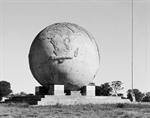
David Goldblatt
Monument honouring Karel Landman who farmed
in this area until 1837, when he became a leader in the Great Trek.
He took a party of 180 Whites and their servants on a trek of
885 kilometres into Natal where he was prominent in several battles
with the Zulus. De Kol, Eastern Cape. 10 April 1993.
silver gelatin print on fibre paper
20 x 24cm
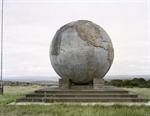
David Goldblatt
The commemoration of Karel Landman and his trek, in this 3m globe,
was an initiative of the National Party and the councils of the Dutch
Reformed Church in two neighbouring villages, Alexandria and Patterson.
Legend has it that the councils could not agree which village should
'host' the monument, so it was placed on this remote koppie between
the two villages. De Kol, Eastern Cape. 20 February 2006.
archival pigment ink digitally printed on cotton rag paper
112 x 137.5cm
|
 |
 |
 |

David Goldblatt at Michael Stevenson
David Goldblatt's photographs of the last decade are an ongoing exploration of the intersections between people, values and land in post-apartheid South Africa. They develop and take into new terrain the approach underlying much of his work in the years of apartheid, work which culminated in his monumental 'South Africa: the Structure of Things Then' which was shown at the SANG and the Museum of Modern Art, New York in 1998.
In his solo show at Michael Stevenson, these continuities and developments are exemplified in two bodies of work. In the first, photographs from various essays undertaken in the years of apartheid are paired with photographs from his post-apartheid work. The resulting many-layered dynamic might be regarded as a meditation on continuity and change in South Africa. It also clearly reveals the connectedness of vision and thought that runs through all of Goldblatt's work - early and recent, black-and-white and colour.
Goldblatt has been critically exploring South African society through his photographs for more than half a century, has published a number of books and has received international recognition for his work. His retrospective, 'David Goldblatt: Fifty-one years', toured galleries and museums in New York, Barcelona, Rotterdam, Lisbon, Oxford, Brussels, Munich and Johannesburg between 2001 and 2005. He won the 2006 Hasselblad Award in recognition of his lifelong achievements.
Opens: January 16
Closes: March 1

Michael Stevenson Gallery
Hill House, De Smidt Street, Green Point
Tel: (021) 421 2575
Fax: (021) 421 2578
www.michaelstevenson.com
Hours: Mon - Fri 9am - 5pm, Sat 10am - 1pm
|
 |
 |
 |


Kathryn Smith
Encryption (site) 2007
in-situ installation
dimensions variable
Photographed by John Hodgkiss
|
 |
 |
 |

Kathryn Smith at Goodman Gallery Cape
Artist, author, editor, curator, collaborator extraordinaire and currently senior lecturer in the Department of Art at Stellenbosch University, Kathryn Smith has established a reputation as an artist with a fascination for forensic investigation and an interest in crimes of passion and the rhetoric of evil.
'In camera' ('in private' or 'in secret') refers to legal testimony heard in private chambers instead of in open court, usually when reliving the experience of a violent and traumatic event through verbal narration would be aggravated by having to do this in public. For her first solo exhibition in Cape Town since 'Euphemism', the Standard Bank Young Artist Award exhibition at Iziko South African National Gallery in 2005, Smith sets up a controlled, immersive environment of light, sound, drawing and photography. Material for the drawings was sourced from a range of print and online media and processed so as to blur the distinction between the handmade and the mass-produced. The portrait subjects are the victims and perpetrators of violent acts, the circumstances of which remain almost incomprehensible in their extremity, even if the facts informing tabloid revelations of these cruel private desires are known. There is a particular focus on violence done to, and by, children.
Smith states: 'I am particularly interested in how, through repetitive media circulation, certain photographic images get detached from their subjects and the representation of a person becomes emblematic of "victimhood", "the missing", "monstrosity" or "evil". This kind of rhetoric functions as a means to situate perpetrators of violence outside the realm of human behaviour and does not allow us to dwell on the particular human and social circumstances of each violent interaction.'
Opens: January 12
Closes: February 2

Goodman Gallery Cape
3rd Floor Fairweather House, 176 Sir Lowry Road, Woodstock
Tel: (021) 462 7573
Fax: (021) 462 7579
Email: info@goodmangallerycape.com
Hours: Tue - Fri 9.30am - 5.30pm, Sat 10am - 4pm
|
 |
 |
 |

|
 |
 |
 |

'Greatest Hits 2007' at AVA
'Greatest Hits 2007' will be a selected exhibition of graduate works curated by Lynette Bester and Kirsty Cockerill that will occupy all four gallery spaces at the AVA. Works have been selected from Michaelis UCT, Ruth Prowse, Stellenbosch University and Stellenbosch Academy. The exhibition offers an overview of the local and broader discourses that run through the four schools and reflects the quality of work produced by the students in 2007.
Opens: January 28
Closes: February 15

AVA
35 Church Street, Cape Town
Tel: (021) 424 7436
Fax: (021) 423 2637
Email: avaart@iafrica.com
www.ava.co.za
Hours: Mon - Fri 10am - 5pm, Sat 10am - 1pm
|
 |
 |
 |

|
 |
 |
 |

'Spier Contemporary Art Awards' at Spier
At the tailor-made gallery on south bank of the Spier Estate the exhibition of the top 100 entries for the Spier Contemporary Art Awards will be displayed. Selected by the Spier Contemporary panel, this exhibition promises to showcase some of the most exciting and innovative of contemporary art. The focus on sourcing art from across South Africa through an intensive selection process means that this will not be merely an outing of the usual suspects. And with no imposed theme, the exhibition is sure to highlight current artistic concerns.
Co-curator and selector Jay Pather remarked 'choosing 100 art works was both arduous as it was humbling. It was made more daunting in that there were so many performing arts entries together with the wealth of visual art. I found there was a fiercely established and assured sense of context in the work submitted. These works speak to the African and South African reality with voices that ranged from the intensely personal to the astutely political. If there was evidence of any lack, it spoke to lack of facility and opportunity. There was however, no lack of talent, vision and scope.'
Each of the 100 artists selected will qualify for a fee of R3 000 and in December five award-winners will be chosen by a panel of judges - they will share R700 000 in award monies to advance their artistic careers. The winners will be announced at the launch of the Spier Contemporary 2007 on December 12 at an opening event on the Spier Estate where the exhibition will be hosted.
Opens: December 12
Closes: February 29

|
 |
 |
 |


Walter Oltmann
Unearthing (detail) 2007
cast metal installation
|
 |
 |
 |

'Sasol Wax Art Award 2007' at Iziko SANG
The prestigious Sasol Wax Art Award is aimed at established, professional artists who are required to use this material as part of their process, medium or concept for their works. The award for 2007 went to Walter Oltmann for a metal cast installation, using the lost wax method. Choosing to title his work Unearthing, Oltmann observes that this 'underpins the notion of uncovering or bringing to light by digging, searching or discovery. It reflects the post-Apartheid era impulse to uncover our history. The hands with dowsing tools suggest practices associated with finding water and settlements as much as digging and mining; as a means of survival, as well as exploiting the land for its riches and also denying access and agency to others.'
The 2007 Sasol Wax Art Award exhibition also includes the work of finalists Wayne Barker, Usha Seejarim, Andrew Verster and Sue Williamson. Barker's investigations into the activities of bees have led to an installation that is, 'a discovery of the possibility of healing with nature and ultimately, the whole of society'. Sue Williamson's split screen video explores the secret world of waxing behind the beauty parlour door. A recreation of a bedroom and a bathroom in fragile wax paper, by Usha Seejarim, suggests a dream-like world and, our own transience as human beings, while Andrew Verster explores ritual and body markings in his powerful installation of suspended panels constructed from layers of tissue paper held together by wax.
Opens: December 5
Closes: March 9

|
 |
 |
 |


Willie Bester
The Missing Ones
|
 |
 |
 |

Willie Bester at Iziko SANG
Bester's capacity to work with found and rejected objects and scraps of metal, and to transform them into extraordinary sculptures filled with social and political meaning, has gained for him a national and international reputation. Added to this is his individualistic application of the medium of oil paint. His source of inspiration is his own environment and experience, but he succeeds in speaking to a bigger audience and in making his ideas and intentions universally applicable.
The exhibition comprises sculptures and paintings and offers a glimpse into Bester's early paintings of the 1980s, which have seldom been seen in public. Of particular interest is the series of portrait studies, specially created for the show and on permanent loan to the Montagu Museum. This exhibition offers the public a rare opportunity of seeing the evolution of Bester's work from its early beginnings through to the recent paintings and sculptures.
This exhibition is the result of collaboration between the Iziko South African National Gallery and the town of Montagu in the Western Cape, where Bester grew up.
The exhibition is accompanied by a catalogue with contributions from Professor Michael Godby and Professor Sandra Klopper.
Opens: December 5
Closes: April 13

|
 |
 |
 |

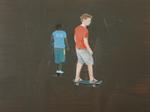
Tom Cullberg
Skateboarders (in different minds) 2007
oil on board
30 x 42cm
|
 |
 |
 |

Tom Cullberg at João Ferreira
Tom Cullberg's painting is charged by the action of the portrayed subject, a subject whose movements entertain and intrigue the eye of the viewer. In 'Small Moments', Cullberg's ninth solo exhibition, the paintings are coloured by the desires and discomfort inherent in many of our day-to-day interactions. A relationship is set up between his characters and the viewer speaking both of intimacy and alienation, and at times giving rise to a disquieting voyeuristic sensation.
The figures depicted seem to vibrate into the background and in this way lose their solidity as the air thickens around them in mid-action. Even his architectural subjects resonate with the history of the 'Small Moments' which they contain. There are shadows present in these works, shadows that allude to the uneasiness within the moments. Cullberg uses found images as well as his own snapshots as a starting point for the figures, objects and places that feature in the paintings. Through adding and subtracting visual and emotional layers, an altered reality emerges that presents us with both the tangible and the intangible. The blurred faces and abstracted landscapes display few traces of their origin and identity. Their specificity belies in their gesture and location imbedded in the brushstrokes. The images bring forth questions: who are these people, what are these houses?
Tom Cullberg has exhibited in South Africa, Sweden and Italy, and is represented in several public and corporate collections.
Opens: January 2
Closes: January 26

|
 |
 |
 |


Ndikumbule Ngqinambi
Umthombo Wegazi 2007
oil on canvas
|
 |
 |
 |

Colijn Strydom, Barbara Wildenboer and Ndikumbule Ngqinambi at AVA
Colijn Strydom employs the main gallery with Tell Yr Daddy I Say Hello, a series of large mixed media works. Strydom draws on the stories of Racheltjie de Beer and blends these established narratives from Afrikaner folklore with a personal critical reflection in order to interrogate notions of contemporary Afrikaner identity and masculinity. Strydom, a recent Master's graduate from Stellenbosch University, has participated in group exhibitions across the country.
Barbara Wildenboer will be exhibiting 'Vanitas' in the Long Gallery. This body of work interrogates the notion of fragility and evanescence. She draws on Julia Kristeva's writing in the Black Sun, asking 'Can the beautiful be sad?... Or else is the beautiful object the one that tirelessly endures following destructions and wars in order to bear witness that there is a survival after death, that immortality is possible?'
Wildenboer collects different indigenous South African flowers. They are photographed and pressed in an attempt to preserve them. They are then sewn and pinned onto photographically printed images that act as a constant reminder of their transient nature. Though the photographs will stay, in time the flower will wither away and serve to emphasize the futility of any attempt to permanently preserve beauty.
Ndikhumbule Ngqinambi exhibits 'Smells and Shadows' in the Artstrip. These evocatively rendered oils on canvas explore the way the past invades the present. He says: 'I find myself looking back on my footsteps. I still feel the faint sounds of those songs they sang then, and so I went back there, not so long ago to the forgotten land. As I stand looking at the valleys, I feel the smell of the plants and the moist red soil. I was not alone, though there was no one. Shadows running faster than the speed of time, you feel their existence but you cannot see them.'
Opens: January 7
Closes: January 25

AVA
35 Church Street, Cape Town
Tel: (021) 424 7436
Fax: (021) 423 2637
Email: avaart@iafrica.com
www.ava.co.za
Hours: Mon - Fri 10am - 5pm, Sat 10am - 1pm
|
 |
 |
 |

|
 |
 |
 |

Berco Wilsenach at Bell-Roberts
Winner of the Absa L'Atelier Award 2005, Berco Wilsenach exhibits new work as part of a comprehensive 'Project for a blind astronaut'. In this exhibition, entitled 'In die sterre geskryf' Wilsenach examines the accessibility of language as a medium, be it information resulting from of a lack of necessary information to the understanding thereof, or on the other hand the inadequacy of language to adequately describe concepts.
The similarities between braille and a star chart are quite obvious. The same system of symbols is used to code and interpret two completely different information systems. Wilsenach draws parallels between the apparently chaotic placing of dots on star charts and the strict patterns of braille. The concept of a blind astronaut plays on a double irony where although a measure of information is provided; he does not have access to the visual embodiment of the information. The seeing observer, on the other hand, does not have access to the information required to unlock the visual image. Both therefore remain in the dark.
Charts are abstractions and simplifications of reality. Especially in the case of the stars, a cultural norm has been placed over nature in order to make it comprehensible. The naming of the constellation follows a complicated mythological storyline. These charts have however fallen into disuse as navigation no longer takes place according to the stars; on the contrary, one can hardly even see the stars from some of the world's large cities.'
In the work In die sterre geskryf, Wilsenach has developed a tangible coding system presenting star charts as pincushions. All symbols are cartographically accurately represented to reveal the constellations to the blind astronaut (when he is found).
Opens: January 12
Closes: February 2

|
 |
 |
 |


Christoph Martin Schmidt
11am 2006
100 x 90cm
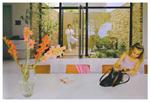
Christoph Martin Schmidt
1pm 2006
100 x 90cm
|
 |
 |
 |

'Surface Tension' at the Photographer's Gallery
'Surface Tension' is a multi-media group exhibition of paintings and photographs. Artists include Roger Ballen, Mxolisi Sapeta, Cobus van Bosch, Johann Louw, Pamela Stretton, Jan Neethling, Bronwen Vaughan Evans and introduces German photographer, Christoph Martin Schmidt.
Opens: December 10
Closes: February 2

|
 |
 |
 |

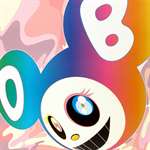
Takashi Murakami
|
 |
 |
 |

Takashi Murakami at 34 Long
Newly acquired limited edition works by Japanese artist Takashi Murakami will be on view at 34 Long during the December season. He holds a PhD in modern Japanese ink painting, and is the originator of the visual concept of 'superflat', his theoretical analogy between the flat perspective of traditional Japanese art and post-war consumerist culture in Japan. From developing his art as a brand to curating and staging GEISAI, a fine art 'bazaar' of astounding proportions, Murakami is an artist to keep an eye on.
Opens: December 4
Closes: January 26

|
 |
 |
 |

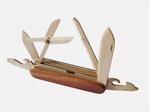
Adrian Köhler
Swiss Army Knife 2007
wood
18 x 4.5 x 35cm
|
 |
 |
 |

Adrian Köhler at 34 Long
A cup of tea, a light bulb, a Swiss army knife, a diamond ring. These are among a selection of sculptures presented by Cape Town artist Adrian Köhler for his solo exhibition at 34 Long. The objects, finely crafted in different kinds of wood, assume a strange hyper-materiality; a physical presence sharpened by their stubborn silence, their deadpan polished wooden patina. They appear to be straightforward replicas of the real thing; yet they are not, they are slightly altered, and in this subdued deception they reveal layers of metaphoric meaning. They call into question not themselves, but the objects they represent.
His chosen material, wood, has a presence which Köhler believes to be loaded with subversive symbolic power. Something wooden is frustrated, he says. The opposite of playful, one step away from being petrified, fossilised. Wood is omnipresent, physically and metaphorically: it is the material of model aeroplanes, of hobbyists and garage handymen; of roadside curios, priceless antiques and great artists.
Köhler, previously a model maker for film and advertising , now works at his art full-time.
Opens: December 4
Closes: January 26

|
 |
 |
 |

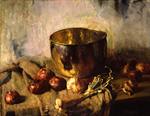
Frans Oerder
Still Life
oil on canvas
|
 |
 |
 |

'Is there Still-life?' at the Old Town House
After the Cubist revolution in art in 1907 and the proliferation of academic art schools, the genre of 'still life' painting, in South Africa as elsewhere, tended to lose the symbolic and moral meanings it had attained in 17th century Holland and 18th and 19th century France. It came to be associated primarily with the idea of representation. In a sense, still life now represents the idea of art itself, and artists in any medium are drawn to it to define themselves as artists. More recently, the very neutrality of the genre has presented opportunities for the introduction of new symbolic forms, especially from cultures that attach great significance to objects.
This exhibition, curated by Professor Michael Godby, combines examples of historical still life paintings from the Iziko Collections with a survey of South African still life painting, from its origins as an imitation of European practice to works from our own day. Stylistic trends that have been applied to the genre over the course of the 20th century are represented. Different methods that have been used to 'Africanize' still life are shown; highlighting works by a new generation of young artists who have appropriated the genre, not only to proclaim their identity as artists, but also to reinvest the subject with powerful new social meanings.
Opens: November 19
Closes: March 31

Old Town House
Greenmarket Square, Cape Town
Tel: (021) 481 3933
www.museums.org.za/iziko
Hours: Mon - Fri 10am - 5pm, Sat 10am - 4pm
|
 |
 |